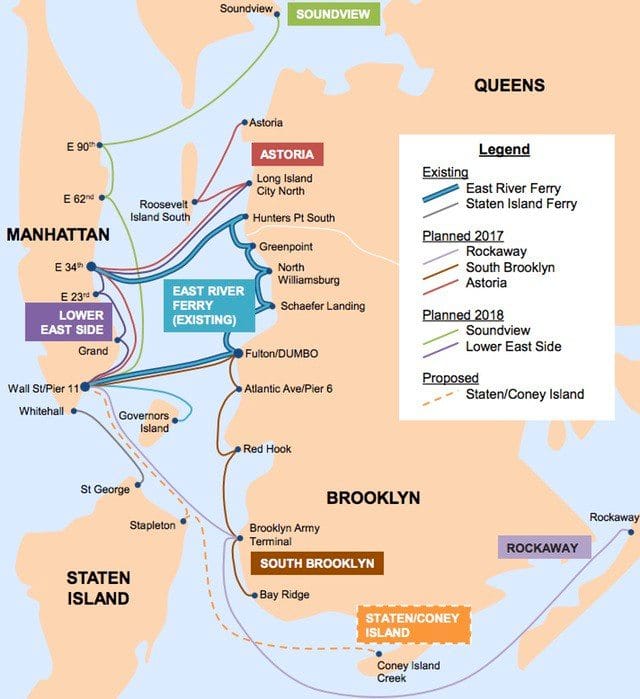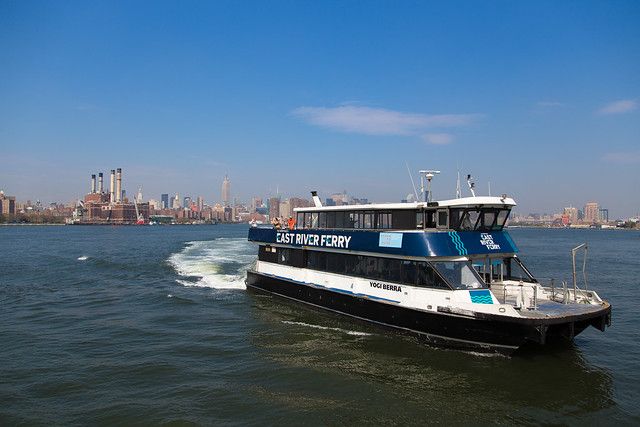Here’s How The Citywide Ferry System May Impact Our Neighborhood’s Air Quality


There are plumes of consternation about a new EDC study about potential air pollution stemming from the city’s planned City Wide Ferry (CFS) system.
The ambitious transportation system championed by Mayor Bill de Blasio, which is based out of the Brooklyn Navy Yard, will cause levels of nitrogen dioxide to surpass the Environmental Protection Agency’s baselines at new docks throughout the city, possibly impacting residences at 1 North Elliot Place in Fort Greene and some industrial buildings at the Navy Yard, according to the EDC report.
The EDC notes that the timeline for the project is too short for the city mitigate the air quality damage that will result from the emissions.
“Full mitigation of the significant adverse air quality impacts that would potentially result from CFS operations is not possible by the 2017 project launch, even with the application of best available technology available for the types of vessels proposed for use in the CFS,” claims the report.
However, the report further cautions that these effects are “localized, limited to small areas near the landings and in the areas surrounding the terminals.”
The Citywide Ferry System will be operated by San Francisco-based Hornblower and will have stops linking all five boroughs and is expected to have all routes running by 2018. The fare will be the same as a Metrocard.
A spokesperson for EDC cautioned against misinterpreting the report, saying that while the ferry system will unavoidably have an impact, however the extent of that impact is unclear.
“While any new mass transit will result in some emissions, we’re proud to be using the most environmentally friendly technology available for the types of vessels needed. Through transit alternatives like Citywide Ferry Service, the Brooklyn Queens Connector, Select Bus Service, and Citi Bike expansion, we’re also helping get more New Yorkers out of their cars and on to greener modes of transportation,” said NYCEDC spokesperson Ian Fried.

Air quality levels may be more perilous in other parts of the city, such as the piers at Brooklyn Bridge Park and at Pier 11/Wall Street, where nitrogen dioxide levels might significantly exceed national standards.
In related Citywide Ferry news, a 2013 EDC study found that property values around ferry stops are expected to increase by 8 percent. Also, a recent report found that the Citywide Ferry and the new BQX Connector streetcar may conflict with each other as well, competing for similar riderships.
There will be a public hearing on May 24 at 6 pm at St. Francis College on Remsen Street and Clinton Street in Brooklyn Heights.




